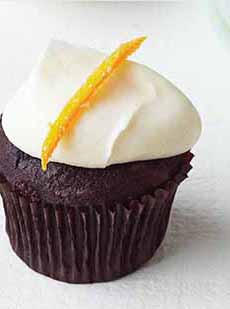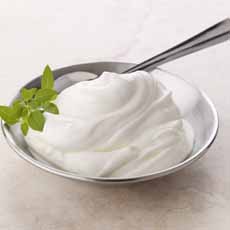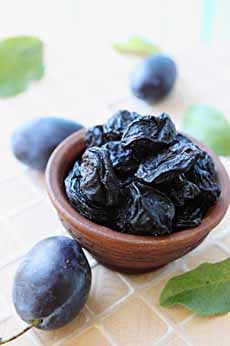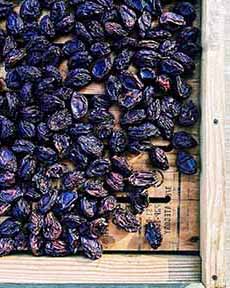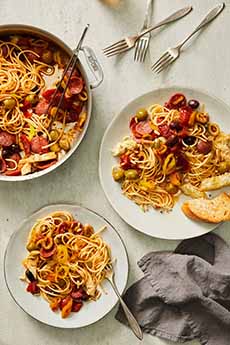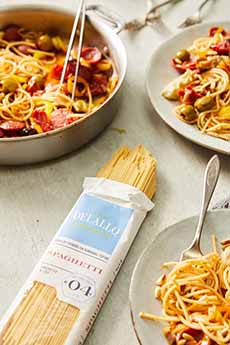|
Try something new for National Pasta Month.
It could be as simple as a shape of pasta you haven’t tried before, from wagon wheels (ruote) to strozzapreti (photo #4—the name means “priest stranglers—here’s why†).
Perhaps it’s baked pasta, like manicotti, pastitsio or ziti.
How about this fun approach to baked pasta: Spaghetti Pie, a recipe from DeLallo.
This spaghetti pie is called Pasta Frittata in Italy.
The spaghetti is tossed with hot Italian sausage, roasted red peppers and San Marzano-Style tomatoes.
Don’t want sausage? Substitute your ingredient(s) of choice.
It’s not your grandmother’s spaghetti dinner—unless, perhaps, your nonna was Italian. Have fun with it!
RECIPE: SPAGHETTI PIE (PASTA FRITTATA)
Ingredients
Butter for greasing the pan
2 tablespoons extra virgin olive oil
1 medium yellow onion, finely chopped
3 garlic cloves, minced
1 teaspoon crushed red pepper
1 pound loose hot Italian sausage (removed from casing)
1 jar (12-ounces) roasted red peppers, diced
12 ounces fresh baby spinach
1 tablespoon tomato paste
1 can 28-ounces San Marzano diced tomatoes
1 teaspoon dried basil
1 teaspoon dried oregano
Salt to taste
1 pound package spaghetti
¾ cups whole milk
3 large eggs
Fresh-ground pepper
1 cup sharp cheddar cheese, grated
2½ cups fontina cheese, grated
1½ cups freshly grated parmesan cheese
Fresh basil, chopped
Preparation
1. HEAT the oven to 425°F. Butter a 9-½-inch springform pan.
2. COOK the pasta according to package directions. Drain and set aside.
3. HEAT the oil in a large skillet over medium-high heat. Add the onion, garlic and crushed pepper; cook for 1 minute.
4. ADD the sausage and roasted peppers. Cook, breaking the meat into small bits until cooked through, about 6 minutes. Add the spinach and cook until slightly wilted, about 2 minutes.
5. STIR in the tomato paste and cook 1 minute. Add the diced tomatoes and salt. Continue to cook, stirring occasionally and scraping any bits from the pan, until the liquid is mostly evaporated, about 5 minutes. Remove from the heat and set aside.
6. WHISK together the milk, eggs, pepper and ¾ teaspoon salt in a large pot (you can use the pasta pot). Stir in the cheddar, fontina and 1 cup of parmesan. Add the sausage mixture and the spaghetti. Stir until combined.
7. TRANSFER the mixture to the springform pan. Smooth the top with a spatula. Set the pan on a rimmed baking sheet and bake until the edges are golden and bubbling, about 30 minutes.
8. REMOVE the pan from the oven and turn on the broiler. Sprinkle the pie with the remaining parmesan and fresh basil. Broil until the cheese is golden, about 2 to 3 minutes. Remove from the oven and run a knife around the inside of the pan.
9. LET the pie rest about 10 minutes, then release and remove the sides of the pan. Cut the pie into slices and serve.
Also try these pasta pies:
Baked Rigatoni Pie
Stuffed Lasagna pie
Spaghetti Carbonara Pie
|
|
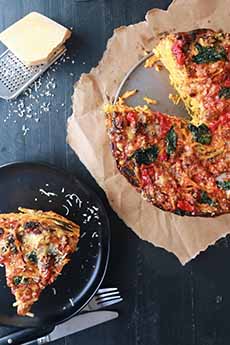
[1] Bake a “pie”: a new way to enjoy spaghetti (photos #1, #2, #3, #4 © DeLallo).

[2] There’s no pie crust: just spaghetti with sausage, red peppers and more.
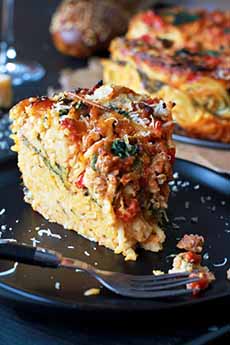
[3] “Slice” is no longer reserved for pizza.
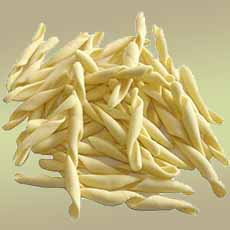
[4] Strozzapreti: hoping to choke the priest so he stops freeloading (photo courtesy Alchetron).
|




